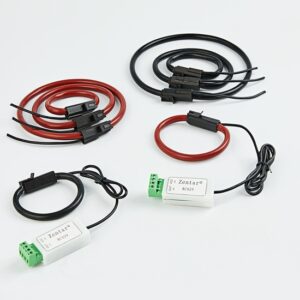Current transformer is mainly composed of a primary winding,a secondary winding and an iron core, and there is insulation among the primary, secondary and iron cores.
In order to improve the accuracy of the current transformer, the error of the current transformer is generally compensated.In addition to the above-mentioned primary and secondary windings and cores, some also wound auxiliary coils or added auxiliary cores. The core of the current transformer has two forms: square and circular.
As the square-sharp one, a piece of silicon steel sheet stacked into a square iron core. The advantage of this core is that the coil is easy to wind. After the winding can be wound on the machine in advance, it is wrapped around the core of silicon steel sheet to become a winding. The disadvantage is that there is an air gap between the cores, low magnetic properties and large winding leakage. And lamination and installation are bothersome.
At the beginning of the ring-shaped iron core, silicon steel sheets are used to punch the ring pieces, which are stacked one by one. Now most of them have been directly rolled with silicon steel strips. The advantages of this iron core are that it has no air gap, high magnetic properties, and is easy to roll. If the winding is evenly wound, the magnetic leakage is small. Therefore, all precision current
transformers above class 0.2 use this kind of tape wound core. Its disadvantage is that it is difficult to wind the winding, especially the thick wire winding, and it is not easy to achieve the mechanized winding.




